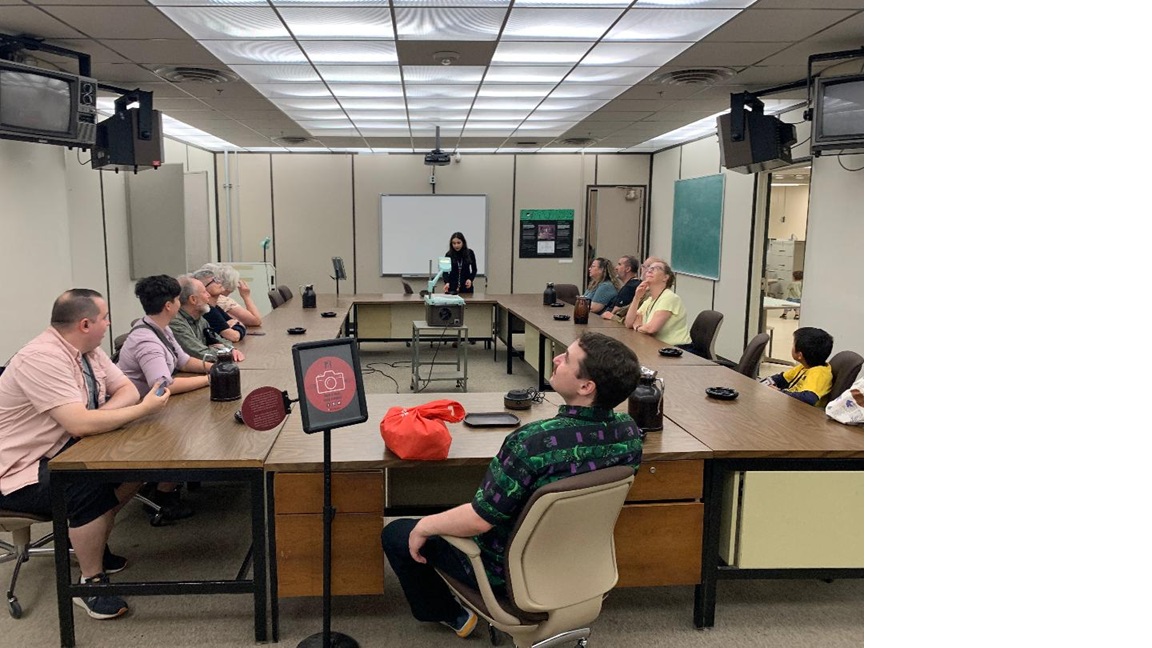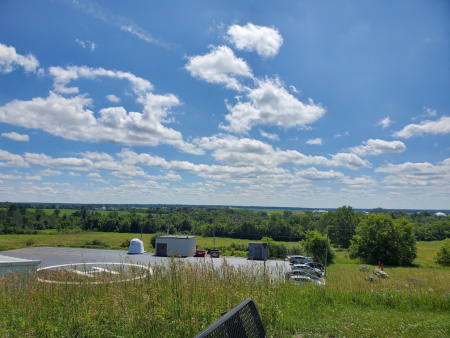Given rising international tensions, sixteen members of the Historical Society of Ottawa’s Museum Club sought shelter in the Diefenbunker, Canada’s Cold War Museum, on the afternoon of Sunday, June 29th, 2025. Our guide informed us that the facility had been commissioned by Prime Minister John Diefenbaker in 1959, though he never visited it, and that it became fully operational in 1962. Designed to protect 535 senior government and military officials, all men, it could survive a blast from a 5-megaton atomic bomb at a distance of 1.8 km. A full-scale model of a “Fat Man” style bomb is displayed in the blast tunnel and is one of the first artifacts we saw.
Our guide took us first through the decontamination room, though we were not asked to strip, (probably a good thing for all concerned), before heading to check out the medical centre, where the “modern” equipment included an X-ray machine. She pointed out the irony of voluntarily being exposed to radiation given the expected circumstances.
Our guided tour, which lasted an hour or so, led us through many of the rooms of the four storey underground shelter that reaches some 75 feet below ground level. She explained that our country’s leaders, but not any family members, would shelter here, with provisions for 30 days, should there have been an attack. Fortunately, the attack never came, though the bunker remained an active military base, as a communications centre, until 1994. During all its active service it was only visited by a Prime Minister on one occasion, in 1972, when Pierre Trudeau visited. Our guide did point out that Justin Trudeau had come to the Diefenbunker, to partake in their popular Escape Room activity.
Upon decommissioning as a military base, the facility was sold to local investors. Some thought was given to turning it into a giant mushroom farm, while another idea would have had the facility flooded as a site for scuba diving adventures. Fortunately for all Canadians it has been preserved as a museum, though it is privately funded without government support.
For those assigned to the bunker, living underground became a challenge in more ways than one. It became a literal challenge to see who could remain underground the longest, the “winner” staying inside for some 11 months. Smoking was, of course, permitted, as attested to by the ceiling tiles of the cafeteria, and eventually the base personnel had to be ordered out for regular exposure to the sun and fresh air.
Our guide took us to the Women’s quarters, implemented in the 1970s as society and the military changed. She pointed out that the cramped sleeping quarters were painted blue, the men’s being painted in yellow, so no man could claim a “mistake” in wandering into the wrong sleeping quarters. The women’s quarters could only accommodate just over 100, so there was integration though not equality.
Following our formal tour, which ended in the vault at the very bottom of the bunker, where Canada would have kept its gold reserves, and the personnel kept their supply of beer, we were invited to continue to explore the Diefenbunker on our own. There were many interesting displays and exhibits, especially on the 1st floor, and this also gave us a chance to investigate further some of the rooms we had been introduced to on the tour. As we exited the Diefenbunker, some of us took the opportunity to take the trail that leads up and onto the top of the bunker, where we discovered a number of interesting features and plaques containing valuable facts. The top of the bunker also treated us to a fabulous view of the surrounding countryside.
 HSO members serve as Canada's War Cabinet. Photo by Doug MacKinnon.
HSO members serve as Canada's War Cabinet. Photo by Doug MacKinnon.
The Diefenbunker is located at 3929 Carp Rd, Ottawa, ON K0A 1L0, and has plenty of free parking. Its website, (just Google Diefenbunker), carries a lot of additional information and video tours.






